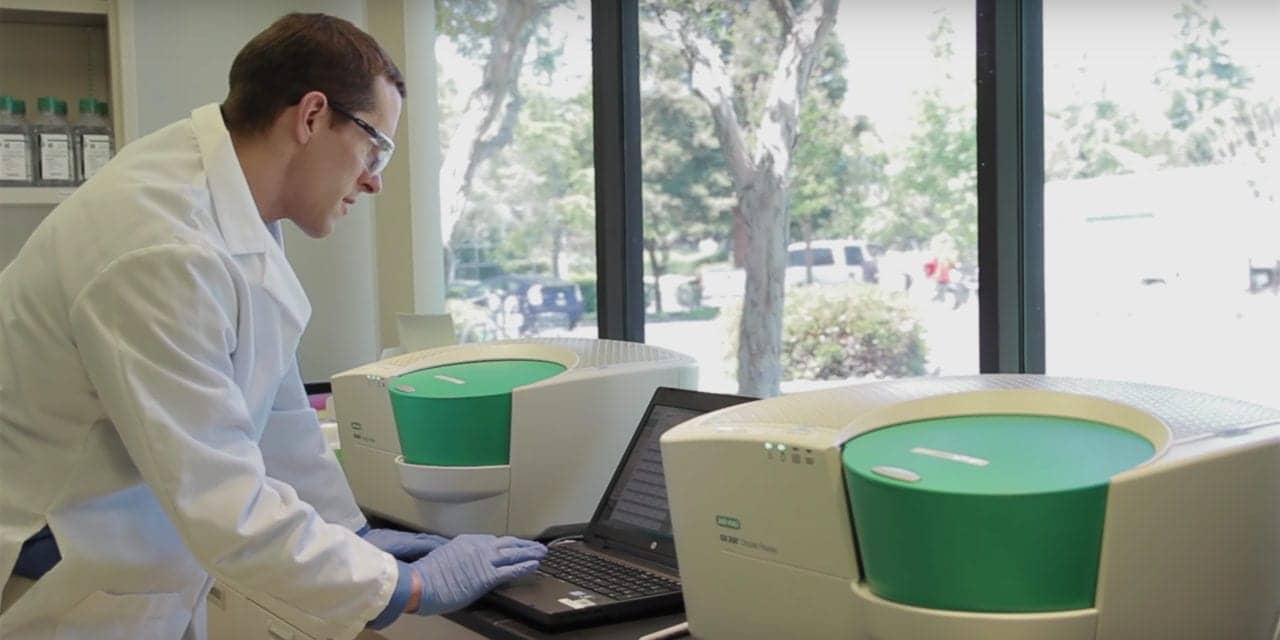This is a companion article to the feature “Liquid Biopsies Guide Improved Cancer Treatment.”
Droplet digital polymerase chain reaction (ddPCR) is a digital PCR method that directly quantifies target DNA or RNA—including DNA or RNA that contains cancer-associated mutations—without requiring a reference curve, as in the case of quantitative PCR (qPCR). The droplet digital PCR method is highly sensitive, precise, and reliable.
After blood is drawn from a patient and either DNA or RNA is extracted from the sample, up to 10 µL of purified sample is subdivided into approximately 20,000 uniform 1-nL droplets, each containing one or a few nucleic acid targets of interest.
If a droplet contains the target sequence, it will be amplified, and a reporter dye will emit a fluorescent signal. Conversely, droplets that do not contain the template strand will only emit weak, residual fluorescence.
Finally, the droplets are streamed, one by one, through a droplet reader that counts the fluorescent droplets and calculates the target nucleic acid concentration in the original sample.



